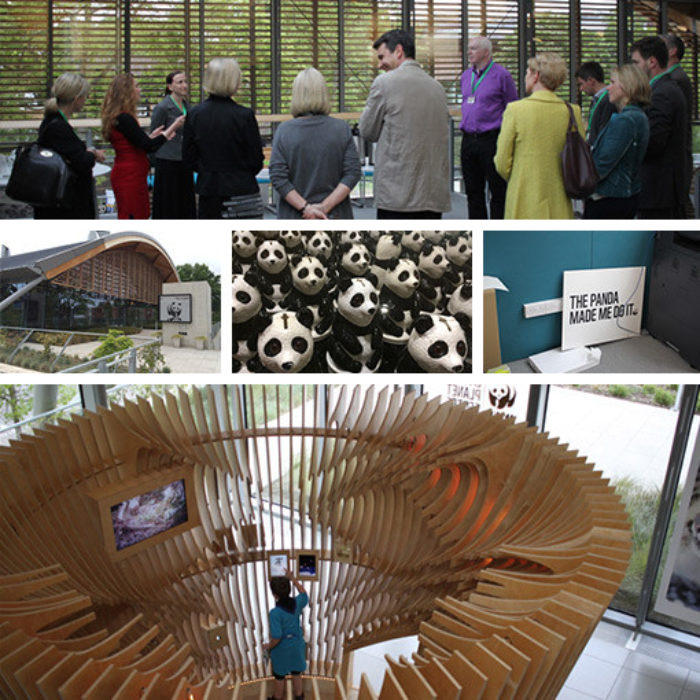Down the cycle path: a route to active travel and a sustainable future
In today’s fast-paced world, where convenience can take precedence over personal wellbeing, it’s crucial to find ways to incorporate physical activity into our daily lives. Active travel offers a solution to this dilemma. And at the forefront of this movement is cycling.
Firstly, getting on your bike is a fantastic way to strengthen the cardiovascular system, build endurance, enhance overall fitness levels, and reduce the risk of a range of chronic diseases. It also stands out as a sustainable solution, as it requires minimal infrastructure, helps to reduce your carbon footprint and contributes to a cleaner, greener future for everyone. Check out our Stop. Swap. Go! project for an example of this modal shift in action.
Hopping on a bike occasionally is an excellent start, and when it comes to building habits, it’s always a good idea to start small and achievable. But ultimately, the goal is to integrate cycling seamlessly into our routines, making it our default mode of travel. This requires a collective effort from individuals, communities and local and national governments to create an environment that supports and encourages cycling as a viable and enjoyable option for all. Let’s look at the key steps.
1. Motivate people to cycle
One common obstacle to cycling motivation is the perceived lack of safety. Concerns about sharing the road with motor vehicles, especially in busy urban areas, can deter individuals from cycling. To address this, it’s crucial to promote the presence of dedicated bike lanes, separated cycle tracks, and traffic calming measures that create a safer environment for cyclists. Communications should emphasise that with proper infrastructure and adherence to road rules, cycling can be a secure and enjoyable mode of transportation.
Another hesitation people may have is the physical effort required for cycling. To overcome this, we should emphasise the health benefits of cycling, such as it being a low-impact, aerobic exercise which promotes weight loss, increases energy levels, enhances mental wellbeing, and is easily tailored to individual fitness levels.
Cost is often cited as an issue, with many believing that cycling is expensive. Here, messaging should be reframed around the cost savings of cycling, e.g., the minimal purchase and maintenance costs of a bike compared to the expenses of servicing, fuelling, taxing and insuring a car. Also worth including are the savings on parking fees and/or public transportation fares, and the affordability and accessibility of second-hand bikes or community bike-sharing.
Convenience is another factor that can influence people’s decision to cycle. Here we should emphasise the flexibility of cycling, as it allows for easy navigation through congested areas, the ability to park closer to the destination, and the benefits of incorporating exercise into existing daily travel routines.
We can also showcase communities that have prioritised cycling infrastructure and successfully transformed themselves into bike-friendly cities, providing inspiration and evidence of the positive impact that cycling can have on a larger scale.
Mobile ethnography is an excellent way to simultaneously understand the context-specific obstacles and motivating factors in different locations, and to gather local inspirational success stories.
2. Make cycling easy
One key aspect of making cycling easy is ensuring accessibility. This means creating a cycling-friendly environment that accommodates individuals of all ages, abilities and backgrounds. Invest in infrastructure that supports cyclists, such as bike lanes, bike racks, and secure bike-parking facilities. Ensure that these amenities are conveniently located near popular destinations, public transportation hubs and workplaces.
Reducing perceived effort and increasing convenience are crucial factors in boosting cycling’s appeal. This can include installing showers and changing facilities at workplaces, implementing bike-sharing programmes, and offering bike repair stations or maintenance workshops.
Digital tools and resources also make a difference. Online platforms and mobile apps can help individuals map out safer cycling routes, while also providing real-time information on bike-sharing availability, bike-friendly amenities, bike parking options and points of interest along the way.
3. Make cycling visible
Flashing lights and high-vis are advisable, but that’s not the only kind of visibility we’re talking about here. To truly embrace cycling as a form of active travel, we must strive to make it more visible in our society. When cycling is integrated into the fabric of our cities and towns, it becomes a more natural choice for individuals of all ages and abilities.
One of the key ways to make cycling more visible is by investing in dedicated cycling infrastructure. This includes building bike lanes, cycle tracks, and shared pathways that are separate from motor vehicle traffic. This not only enhances cyclist safety but also sends a clear message that cycling is a valued and respected mode of transportation. In addition, consider traffic calming measures, reduced speed limits, and the integration of cycling into urban planning and development. By prioritising cycling in transportation policies, we create an environment that supports and encourages its growth.
Advocacy also plays a vital role in making cycling visible in our communities. Passionate cyclists should be encouraged to:
- Join local cycling advocacy groups or organisations that work towards creating bike-friendly communities. These groups can provide valuable resources, support, and opportunities to collaborate with like-minded individuals.
- Engage with local government representatives and decision-makers via attending city council meetings, or participating in public consultations to voice support for cycling infrastructure projects.
- Promote not just cycling’s economic and environmental advantages, but its qualities as an inclusive and equitable mode of transportation, where infrastructure improvements benefit all members of the community, regardless of age, gender or ability.
Simple prompts and messaging can also help increase the visibility of cycling. For example, signage on the front door of an office saying “Don’t forget to put your bike lights on”, would make a culture of cycling more visible to all colleagues, as well as being a helpful reminder to stay safe.
4. Encourage a positive cycling culture
It’s important that we encourage participation with and from local cycling groups, clubs, or organisations that organise group rides, social events, or advocacy initiatives. These communities provide a support network, valuable knowledge-sharing opportunities, and a sense of camaraderie. By connecting with fellow cyclists, individuals can gain confidence, learn from experienced riders, and discover new routes or cycling destinations.
Group rides and cycling events are especially powerful ways to bring cyclists together, build connections, and create a sense of belonging. In addition, they offer a chance to explore new routes, discover hidden gems in the community, and build lasting friendships.
Using social media platforms, local cycling clubs, and online forums to share stories, photos, tips and safe/interesting routes, helps to create a supportive environment where individuals feel empowered and encouraged to join the cycling community.
In addition to fostering community and knowledge-sharing, promoting inclusivity is essential for a positive cycling culture. Encourage diversity in cycling by highlighting the experiences and achievements of individuals from different backgrounds, genders, ages and abilities. Ensure that cycling events, clubs and initiatives are accessible and welcoming to all.
Conclusion
It is essential to embed and embrace cycling as a form of active travel if we’re to create a healthier, greener future. Despite the perceived barriers, we can inspire more people to choose cycling by promoting the benefits, showcasing the cost savings, and highlighting the convenience of the activity.
By investing in infrastructure, offering facilities that support cycling, and promoting regular maintenance, we can ensure that cycling is a seamless and enjoyable experience. And by promoting group rides and cycling events, and the sharing of experiences and knowledge through social media and local cycling clubs, we can build a supportive community.
Whether it’s commuting to work, running errands, or simply going for leisurely rides, every pedal stroke makes a difference.
Get in touch
To talk about how we can help you increase the uptake of more active and sustainable modes of travel in your organisation or community, or to foster more positive cultures in general, just give me a call, or email andrew.drummond@corporateculture.co.uk




